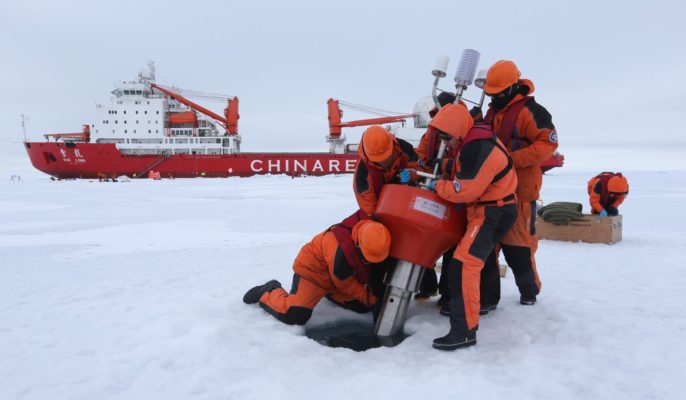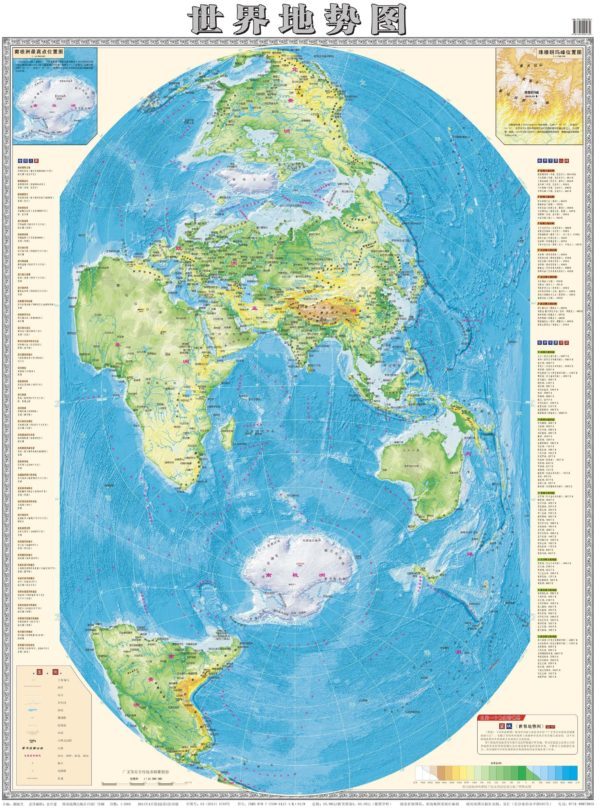It is very difficult to have a conversation with an ice-floe. You may select a floe with an intriguing personal history; perhaps a past way up in the Arctic Ocean or a recent history of nerve-wrecking encounters with menacing icebergs. Even so, I would assume that your conversation will be short and shallow, devoid of any new hope, love or inspiration, based almost exclusively on your own muddy thoughts and mounting fears of climate change which your local news most likely refueled once again last night.

We talked about this at the recent Arctic Circle conference in Iceland among the more than 2000 people attending from all over the Arctic, and we talked about it in Finland a few weeks earlier among the 400 people at the great congress of CAFF, the Conservation of Arctic Flora and Fauna Arctic Council working group.
The question is, how do we talk sensefully about climate change? How do we configure the heady effects of climate change in the Arctic without herding ourselves and the rest of the world into a shivering abyss of fear and apathy?
Scientists, environmentalists, writers, filmmakers and politicians all around the Arctic are scratching their heads to find a way to shake the rest of the world into actually caring about climate change in the Arctic. I was intrigued to report in this space a few weeks ago how the World Wildlife Foundation is even turning away from the story of the soon-to-be-extinct polar bear; realizing after years of campaigning how it certainly generates much caring for bears but not really the kind of action on climate change that the WWF is looking for.
Thankfully, bright people are providing new food for thought. Look for instance to the Swedish professor of environmental history Sverker Sörlin, and you will learn why it may be worth remembering that ice-floes do not make great conversation or why stories of struggling polar bears or thawing permafrost in Siberia are unlikely to cut it alone.
In a new wide-reaching book “Competing Arctic Futures”, Sverker Sörlin in the concluding chapter warns us of the many projections of the future of the Arctic based on simplistic or reductionist perspectives, as he calls them. Our current visions of the future of the Arctic, Sverker argues, are “science informed projections of waning sea ice and irreversible warming”. As climate change accelerates, natural science and its preoccupation with ice, snow, permafrost and other natural phenomena quite sensibly becomes more dominating in our thoughts on the future, but we must not forget that in the end it is us — people — who decide how to react.
“Once you introduce societies and their complexities, contrasts, and creativities, there will always be a healthy balance between the necessity to simplify and predict on the one hand and the necessity to doubt and point to alternatives on the other. Above all, it will be necessary to allow for democratic and collective, indeed political agency which is another word for freedom,” Sverker writes. He is calling here primarily on scholars in the humanities, but the rest of us are invited, too, I believe.
Hurricanes have long been given names like Katrina or William, but you cannot talk sense to them, plan for the future or fall in love with them. One of Sörlin’s colleagues, Nina Wormbs from the Royal Institute of Technology in Stockholm, argues in the same book how the two most dominating features in current predictions of the future of the Arctic – climate change and resource extraction – seems to be pushing all other alternatives aside.
“The possibility to choose between different futures by the way of our own actions seems virtually absent”, she writes. “Determinism has increased with the forcefulness of climate change, to many invisible but nonetheless perceived as unstoppable. This narrative has consequences for the possibility of action in the present. It certainly provides opportunities for some, but for others it offers mostly constraints, if not decay,” she writes. The book is a great scholarly journey with entries also from several Russian scholars through our urge to predict and shape the future of the Arctic, but it begins and ends, perhaps unintentionally, with a timely warning.
“We must not conflate how climate responds to human action (…) with how humans can respond to the changing climate,” as Nina Wormbs puts it.
Many in the Arctic have been concerned for long how indigenous – or just Arctic – voices are often missing from the global picture of the Arctic. In “Chasing Ice”, for instance, the prize-winning documentary film of retreating glaciers by US photographer James Balog, only one person from the Arctic, an unspeaking inuit sled handler, appears for a few seconds. In journalism we hail those like Elizabeth Arnold, a former U.S. National Public Radio (NPR) correspondent, who told us at the Arctic Circle conference of her project “Combatting Arctic Climate Change Fatigue by Bringing Indigenous People and Resilience into the Story”. Other concerned journalists in Norway, Russia, Finland and Sweden are doing the same.
In science climatologists and oceanographers struggle to incorporate indigenous knowledge and experiences in their work. In Arctic politics Arctic peoples are Permanents Participants within the Arctic Council and elsewhere present under other nominators, but in the global, grander picture of Arctic development their role is often limited.

Chinese scientists in action; China is rapidly becoming a major player in the Arctic Photo: Xinhua
Also in this regard climate change is adding to the challenge. In 2015 we learned in “Contesting the Arctic” (Steinberg, Tasch and Gerhardt; I.B.Tauris) how at least seven different schools of thought compete for dominance in current thinking on the Arctic. There are those who fathom the Arctic primarily as a terra nullius, unclaimed and up for grabs, others imagine the Arctic principally as a resource frontiers waiting for eager patrons of industry and still others see the Arctic mostly as a pristine gem of nature that we should all rever and protect.
Most of these imaginations allow only limited space for the indigenous and climate change is squeezing this room even further. As researcher Eric Paglia from the Swedish Defence University investigates in “Competing Arctic Futures” the current understanding of the Arctic is increasingly incorporating countries and actors who are not in any usual sense of the word even Arctic at all.
After the cold war journalists, scholars and politicians talked increasingly of the Arctic as a region of nations and peoples with comparable interests and living nicely within a somewhat defined common geography. Those were the days when the Inuit Circumpolar Congress, the Arctic Council and other regional bodies came to life.
But climate change and the explosion of global interest in the Arctic is changing the story once again. Paglia scrutinizes otherwise confidential documents from China, Germany, Japan, South Korea, the UK and other non-Arctic nations to find out how they assert their claim to the Arctic. He recounts how the Arctic as it is increasingly presented now also encompasses Chinese interests, Singaporean suggestions, inputs from the EU, India and South Korea. Symptomatically, as I write this, preparations for an Arctic Circle pop-up conference in Seoul this December is underway. Climate change, climate science, shipping and commerce is connecting the Arctic to the rest of the world. All of which will further narrow, most likely, the space offered to Arctic indigenous voices and perspectives in stories about the Arctic in international newspapers, in news items on tv, in films and other renderings.

Chinese world map – used by some Chinese authorities at least since 2014
Perhaps the Arctic is indeed even moving to a whole new location. As New Zealand’s famous China scholar Anne Marie Brady brings to attention in her book “China as a Polar Great Power”, the Chinese authorities are increasingly advocating the use of a new world map. In this world image the Arctic no longer lie far away at the cold top of the Earth. Rather, the Arctic and the Arctic Ocean is, at least on this map of a China-centered world, located much close to the central line of action; not in the global periphery.
Obviously, we need to talk about all this. And as we are now reminded, conversations with ice-floes, polar bears or thawing permafrost are unlikely to suffice.
“Competing Arctic Futures – Historical and Contemporary Perspectives” (ed. Nina Wormbs), Palgrave Macmillan 2018.
This blog was also contibuted to ArticToday.com